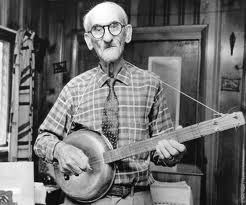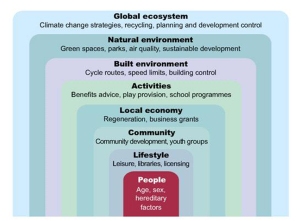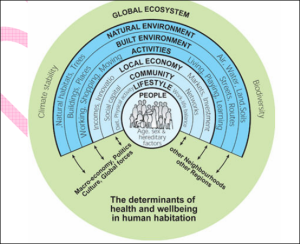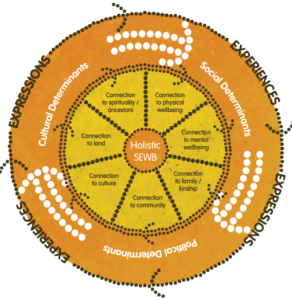I have become used to the paradox that Medics, met one at a time, all seem to drink enthusiastically, that reported alcohol abuse by medics steadily increases but, at dinners given by Medical Faculties of Universities, I must expect very little alcohol. Medics feel obliged to signal to the world and each other that alcohol is a delicious toxin that significantly increases risks of liver damage, bowel cancer, diabetes, heart disease, neurological problems and, at least in mid-life, dementias [ eg 1 and alarmingly many other studies ]. They have not always taken this line. During the 18tth and 19th centuries physicians were happy to prescribe patients a bottle of wine a day and, even as late as the 1960’s, well-heeled parents would provide cases of Burgundy to fortify their pregnant daughters. Alcohol has been around since at least 7000-6650 BC when a fermented drink made of grapes, hawthorn berries, honey, and rice was drunk by Han Chinese. Babylonian contemporaries made do with quite nasty wheat beer. Wine is suspected in Georgia in 6000 BC, and confirmed in Iran in 5400 BC. The Koran forbids alcohol, licensing duller intoxications from chewed quat-leaves, but the Old Testament gives it a good press: psalm 104:15 praises “wine that maketh glad the heart of man…” and Proverbs 31: 6-7 recommends alcohol as a help for the dying and depressed to forget misery. We delight in stories featuring Winston Churchill’s wartime consumption of Champagne and Brandy, and other notables whose prodigious consumption failed to undermine remarkable achievements. Especially when they are as witty as Churchill, answering a Mormon guest’s “Mr Churchill, the reason I do not drink is that alcohol combines the kick of the antelope with the bite of the viper” with “All my life I have been searching for a drink like that”. Alas, though Churchill survived into his 80’s, he became so incapacitated by the effects of multiple small strokes that, if he were less venerated, he would have been diagnosed as a vascular dement. Others did not do so well. Pitt the younger drank several bottles of Port a day but it did not improve his performance in the Commons and he died young. The recent long-delayed post mortem on Richard III reveals that he drank at least a bottle of wine a day – but perhaps died too early ( 36) of violence for long term effects to become apparent. Until the 19th century the life-shortening lethality and brain destruction of alcohol were not recognised because there were so very many other ways to die young, and paths for alcohol to kill you before it noticeably affects your mind.
Scores of studies have investigated whether drinking in early or middle age impairs memory and intelligence and increases the risk of dementias and what kinds of drinks are most harmful. The least ambiguous message is that “bingeing” – drinking a great deal of alcohol on single occasions, but regularly, does considerable harm. A convincing Finnish longitudinal twin study [ 2 ] reports that binges (defined as drinking at least a bottle of wine or 5 bottles of beer) once a month or more often during middle age definitely increases the risk of Alzheimer’s disease as you get older. The effects of regular consumption of smaller amounts are less clear.
Surveys in the USA, UK and Australia all agree that lifelong alcohol consumption is much lower in women than men, peaks in the late 20’s and early 30’s for both sexes and then declines quite sharply and that, overall, alcohol consumption is declining. However, during recent decades there has been a trend in all three countries for the late middle aged and elderly to drink increasingly more year on year. A 2015 survey of 9248 elderly drinkers [3] found that 21.4%, or one in five, drank above safe limits (21 units, – i.e. equivalents to 25 175 ml glasses of wine a week). Older unsafe drinkers tend to be male and Irish. At all ages Africans, Caribbeans and Asians drink less than Whites. Self-reports of risky drinking decline in old age but, presumably, this is partly because fewer enthusiastic drinkers survive into their late 70’s and 80’s.
A much-publicised finding from more recent studies is that, among the elderly, things seem to be getting worse. A survey of mortality statistics for 1991 found 257 men and 271 women aged over 75 died of alcohol related conditions and by 2012 this rose to 580 men and 285 women. The trend was even stronger for middle-aged women aged 59 to 75.
Rahul Rao and Brian Draper [4] report that between 2005 and 2015 hospital admissions for alcohol-related brain damage among people aged 60 + rose by 140%, contrasting with 10% for 15 to 59 year olds. Socio-economic deprivation is a very strong predictor of risky drinking but this cannot be the main reason because the trends are most marked in prosperous baby-boomers rather than desperate destitutes. Dr Mark Ashworth, a GP and primary care researcher, analysed health records of 27,991 Londoners aged 65 years and over [BMJ open] Of these 9248, (21%), drank more than the recommended safe limits and unsafe drinking was more frequent in the elderly than the population average. Among the 5% of heaviest drinkers men drank over 49 units – more than a bottle of whisky – and women 23 units a week, almost 2 bottles of wine a week. This study again found that drinking was more common among Irish and white British than among Caribbeans, Africans or Asians. Medical commentators suggest that GPs are not sufficiently alert for signs of problem drinking in the prosperous, and apparently well-functioning elderly and that bored or depressed elderly who can easily afford tempting alcohol may unwittingly fall into a routine of excessive consumption.
All studies note that in old age heavier drinking is often a socially invisible activity, often solitary rather than gregarious, carried out inconspicuously at home, usually in the evenings, and typically provoked by boredom, depression, and events like bereavements and other inevitable realities that can make old age difficult. I am sorry to hear this because I seem, at least at the moment, to have no sorrows to drown, and my drinking seems a jolly process ( for me if not for those who put up with me) a heart-gladdener rather than a misery-muffler. I cannot argue against the convincing and dire warnings from nearly all studies that have not been sponsored by the alcohol industry. Neverthless it is a personal relief to find that at least one large, apparently well-conducted and honest study offers a dram of comfort. In 2011 Siegfried Weverer and 9 others funded by the German Primary Health Care trust recruited 3,202 people aged 75+ who were free of dementia when first seen. Three years later 217 had suffered Alzheimer’s, Picks or multi-infarct dementias. Within a range of moderate drinking and after controlling for a number of potential confounders, current alcohol consumption was associated with a 29% decrease in overall dementia incidence with a 42% decrease specifically in Alzheimer’s. This sample is unusually old compared to those assessed in other studies but the authors point to similar findings in a study of drinkers aged 85 and older and also in slightly younger groups. Again it may be that we are dealing with a survivor effect. Those who reach older ages have always led pretty sober lives. For me a particularly congenial minor finding from the Weverer study is that beer and spirits work just as well as wine – most other studies have found benefits from wine alone. Another is that huge (up to 490,000 men and women ) and methodologically convincing studies find that moderate drinking prolongs life by reducing risks of many different diseases. [ 5].
There are unresolved puzzles such as why alcohol in middle age seems to be strongly associated with increased risk of dementias, damage to the hippocampus and consequent memory loss while modest drinking at much older ages seems to do good. Part of the solution must be that the oldest people studied are survivors left after all the ravages of drinking have killed off many of their less temperate peers. However this may be, just at this moment I am in no mood to moderate my relief by exploring this issue any further in the dusty journals. It is six PM and the gin, the ice, the lemon and the frisky tonic water will all be there as soon as I open the fridge. The ingredients for a fine Negroni are also to hand. Muttering to myself “Moderation, Moderation, always Moderation” I shall take steps to tastefully prolong my life and so, also, what remains of my mind.
- Liu, K. (2015). Health-related quality of life and related factors among elderly people in Jinzhou, China: a cross-sectional study. Public Health, 129, 667-673.
- Jarvenpaa, T., Rinne, J et al. (2005) Binge Drinking in Mid-Life and Dementia Risk, Epidemiology, 16, 766-771.
- Rao, R., Schofield, P., Ashworth, M. (2015). Alcohol use, socioeconomic deprivation and ethnicity in older people B.M.J. Open, 2015.5.e007525
- Rao, R., & Draper, B. (2015). Alcohol-related brain damage in older people. The Lancet Psychiatry,2(8), 674-675.
- Thun, M. J., Peto, R., Lopez, A. D., Monaco, J. H., Henley, S. J., Heath Jr, C. W., & Doll, R. (1997). Alcohol consumption and mortality among middle-aged and elderly US adults.New England Journal of Medicine, 337(24), 1705-1714.




















